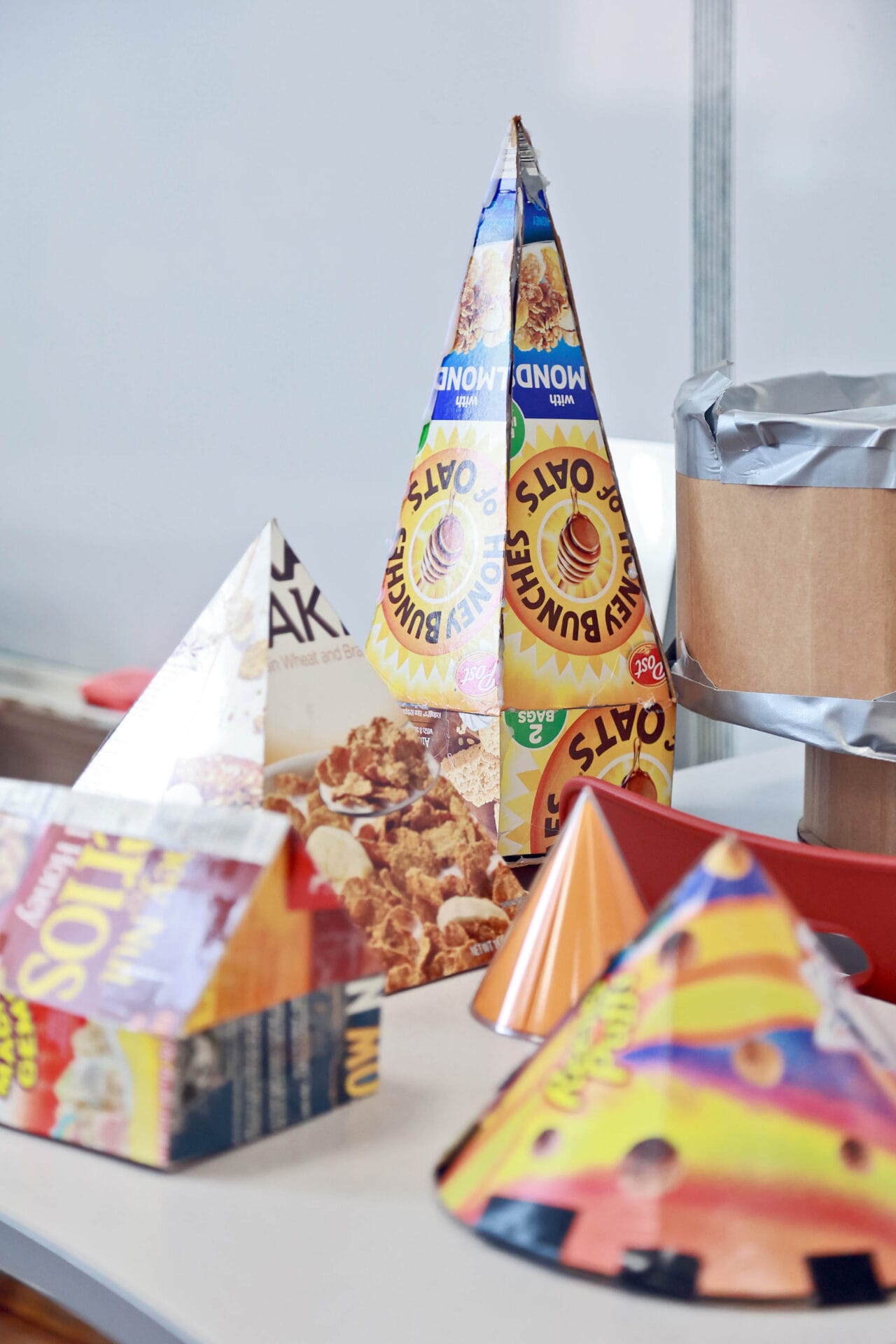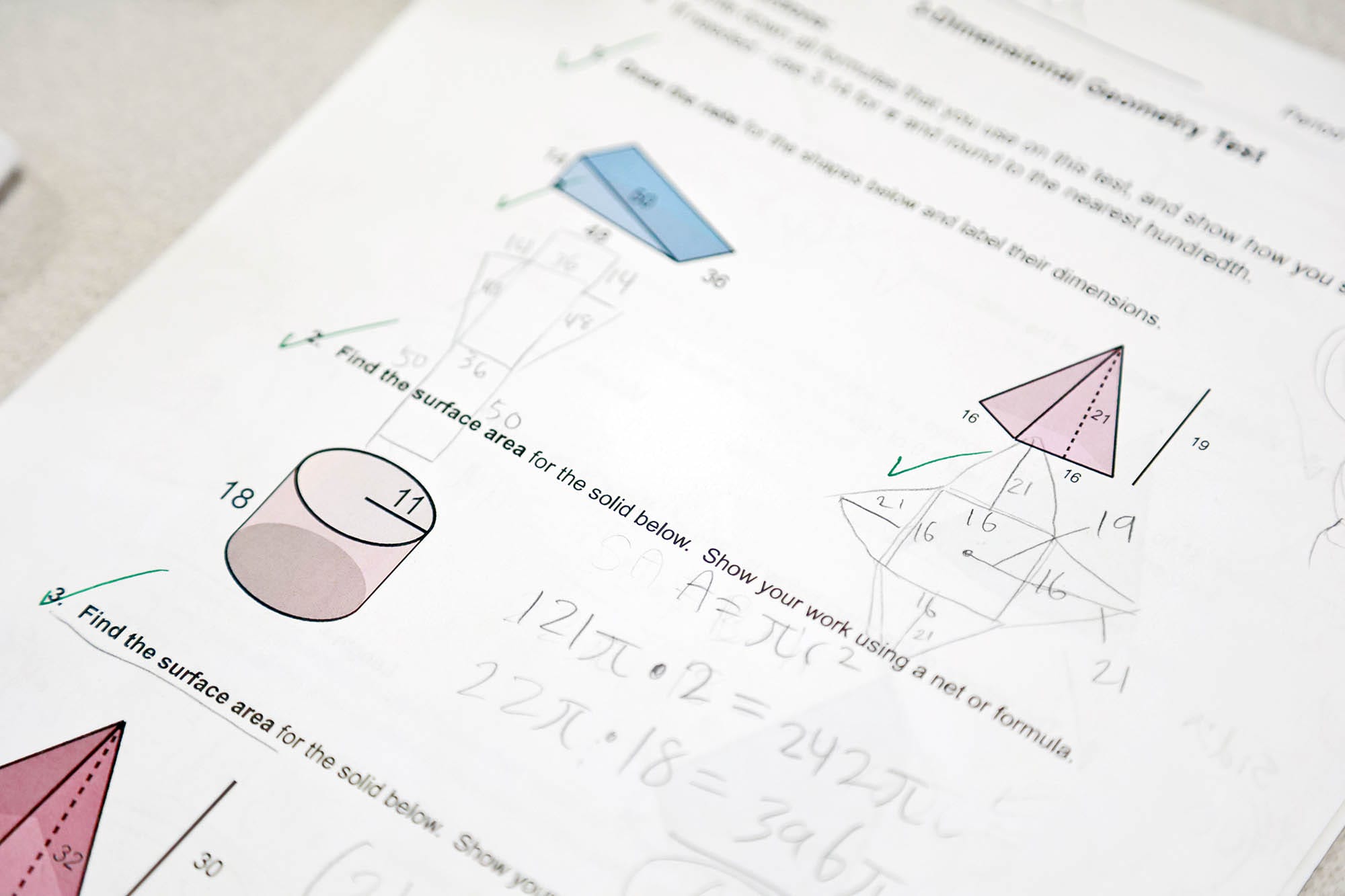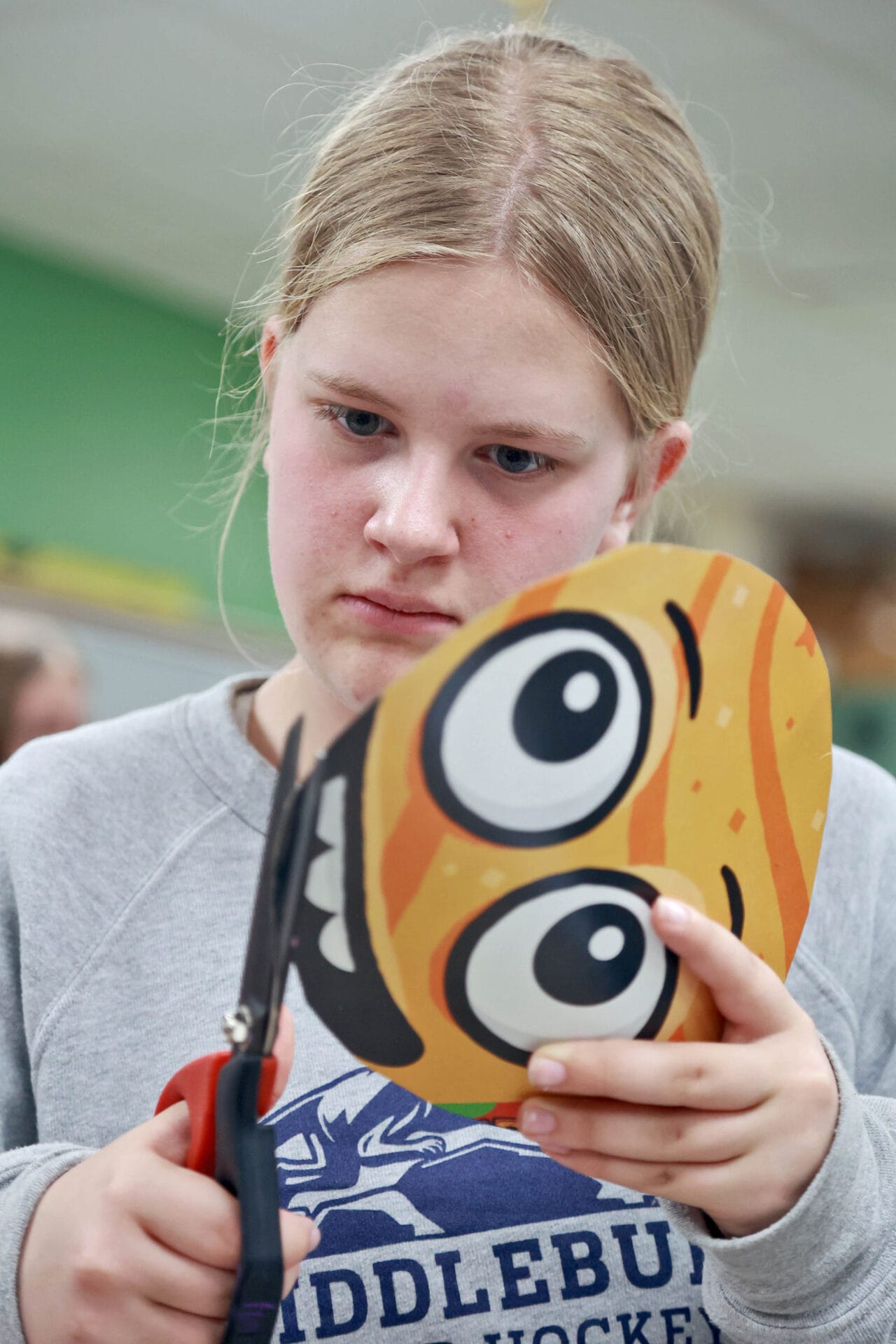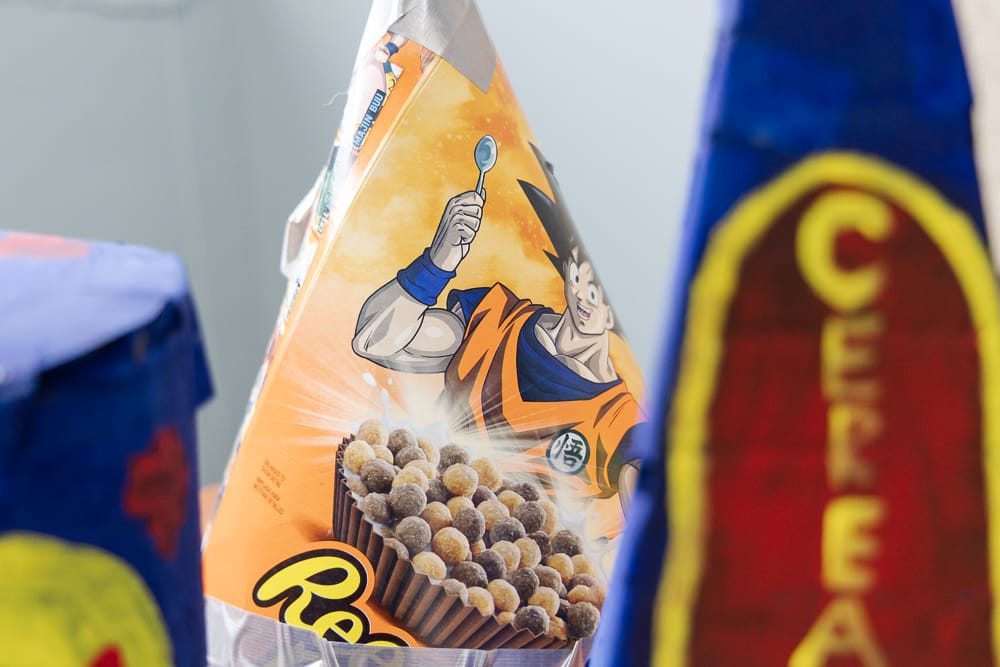The cereal market is diverse, so when a major cereal brand asks you to design their new packaging, what do seventh-grade math students do? They design packaging in the shapes of triangular prisms, cylinders, square pyramids, and cones.
A seventh-grade 3D geometry unit provided the perfect inspiration for understanding the surface area and volume of three-dimensional solids, and the cereal box assignment brought the 3D concepts to life.
The assignment: The package must hold the same amount of cereal, which requires measuring the volume of a regular cereal box before designing a new concept. Also, the company prefers the container to use less cardboard (surface area) than the current box model. Students must present four new designs using 3D solids and create a physical prototype for one of the designs. The Accelerated Math students must design “composite shapes” with two or more simple solids. Everyone had to make a cut list for the product face before drawing, cutting, and assembling their solid shape.
Middle School Math Teacher Steve Looten shared, “Some students realized that by starting with a small base, their solid had to be much taller. Some initial designs were over four meters tall! We had to analyze whether or not that would be a practical design to have in stores or at home. Some classes had to make a one-third-scale model instead of a full-sized one. Their projects analyzed how scaling down the length of a model also changes its surface and volume but in different ratios.”
In the Middle School Makerspace, Middle School Science Teacher & Maker Coordinator
Branson Lawrence provided students with the materials and tools needed to start cutting and building their various shapes. He said, “It was great to see the students use many different forms of measurement (length, width, height, angles) to create their model accurately. Several students found this more challenging than they might have initially thought.”
Reflecting on the build, Peter Tschudy ’29 shared, “I enjoyed working with friends in the maker space to create our boxes. I was surprised by the difference between the difficulty of the work packet and the actual cardboard project. The packet wasn’t too difficult but took much more time and effort than the cardboard project.”
Challenging students to combine different math concepts into 3D form was all part of the plan. Middle School Math Teacher Cameron Youngman shared, “This is a great project because it challenges students to combine two major mathematical concepts: algebra and geometry. Incorporating the makerspace is an additional hands-on component that allows students to see how important it is to connect real-life ideas to the dimensions of the shape they need to build.”
Stella Bergquist ’29 said, “The project was so fun, and it was entertaining to figure out all the surface area and the volume of each shape.”
As the students put their mathematical and creative skills to the test, they not only mastered the concepts of geometry but also discovered the practical implications of their designs, making breakfast a truly multidimensional experience.
































